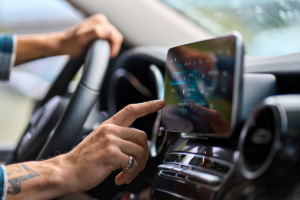
Although technology has improved safety in a variety of ways, it has also unlocked new potential points of failure. There are four primary causes of accidents that can be attributed to technical failures in “smart” vehicles:
1. Malfunctions:
When the vehicle’s systems or components fail to operate as intended, leading to potentially dangerous situations.
Electrification Technology
One type of failure in electric vehicles is their tendency to catch fire or experience small explosions after an accident. Additionally, the silent operation of EVs can pose a safety risk for pedestrians and cyclists, who typically use auditory cues to determine the proximity of vehicles.
Radar Failure
We’ve already seen instances where vehicles can fail to accurately detect whether an object is present or not, or even mistake a pedestrian for something that poses no threat, failing to recognize them as human at all.
2. Misuse:
Occurs when the vehicle is improperly used by the driver or operator, such as disregarding safety protocols or misusing features. Concerning examples have surfaced on social media, including a Tesla driver wearing Apple Vision Pro while driving, highlighting the risks of such behavior.
A clear example of this can be seen in 2018, when a self-driving Uber crash was mostly caused by human error. The vehicle’s safety driver, Rafaela Vasquez, was found to have been streaming a TV show on her mobile phone while driving. Dashcam footage revealed that Ms. Vasquez spent 36% of the trip that evening looking at her device. The NTSB noted that Uber’s computers detected Ms. Herzberg 5.6 seconds before the collision but failed to correctly identify her as a person. Although the victim was under the influence of substances and crossing in an unauthorized area, it was expected that the vehicle and its advanced systems would have been better equipped to prevent the collision.
The National Transportation Safety Board (NTSB) reported that an “inadequate safety culture” at Uber was a significant factor.
3. Distractions:
Not all distractions stem from negligence. The introduction of touchscreen control panels, with more complex drop-down menus compared to traditional buttons and knobs, has significantly altered how much attention we can devote to the road.
It’s known that analog controls typically allow drivers to complete four tasks within about 10 seconds. However, when using a touchscreen or digital control panel, the average time needed increases significantly, ranging from 20 to 40 seconds.
4. Hacking:
While these vehicles offer significant benefits, their connectivity also makes them vulnerable to cyberattacks. What forms can these take? Unauthorized remote access could result in anything from the theft of personal information to serious risks to passengers’ safety if the system is deliberately compromised. The 2015 Jeep Cherokee incident serves as a reminder of these risks. In a controlled experiment, researchers demonstrated how they could remotely infiltrate the vehicle’s system over the internet, cutting its transmission and even disabling the brakes—all while the driver sat helpless behind the wheel. The alarming revelation forced the automaker to issue an urgent recall of 1.4 million vehicles, highlighting the very real dangers of automotive cyber vulnerabilities.
As vehicles become more reliant on digital systems, the challenge shifts from merely improving technology to ensuring it functions reliably in unpredictable real-world conditions. However, no matter how advanced these systems become, our primary tools for preventing accidents will always be attention and a strong sense of safety for others on the road.
